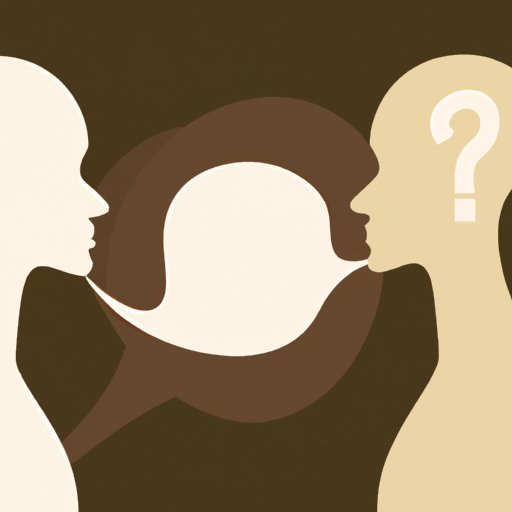Introduction
Effective communication is an essential skill in all aspects of life. It helps us form relationships, resolve conflicts, and understand one another better. However, many people find it difficult to communicate effectively. In this article, we will explore some tips and techniques that can help you become a better communicator.
Practice Active Listening
Active listening is a communication technique that involves paying close attention to what the other person is saying, without interruption or judgment. It involves not only hearing the words that are said but also trying to understand the underlying meaning of what is being communicated.
The benefits of active listening include improved understanding of the message, better problem-solving abilities, and stronger relationships. To practice active listening, try to focus your attention on the speaker, make eye contact, and ask clarifying questions to ensure that you have understood the message correctly.

Ask Questions to Ensure Understanding
Asking questions is a great way to ensure that you have fully understood what someone has said. It shows that you are engaged in the conversation and that you care about the message being communicated. Additionally, asking questions can help to uncover any misunderstandings or hidden agendas.
Examples of questions to ask include “Can you explain that in more detail?”, “What do you mean by that?”, and “What do you think would be the best course of action?”. When asking questions, it is important to remain open-minded and to avoid making assumptions.

Take Time to Think Before Responding
When communicating with others, it can be tempting to respond immediately. However, it is important to take the time to think before responding. This allows you to consider your response carefully and ensure that you are communicating your message accurately and clearly.
The benefits of taking time to think before responding include avoiding miscommunication, preventing arguments, and allowing for thoughtful conversations. To practice this, try to pause for a few moments before responding to give yourself time to think about what you want to say.

Speak with Clarity and Confidence
Speaking with clarity and confidence is essential for effective communication. When you speak with conviction, it shows that you are sure of yourself and your message. Additionally, speaking clearly and slowly makes it easier for the listener to understand you.
To practice speaking with clarity and confidence, try to slow down when you are speaking, use hand gestures to emphasize your points, and maintain good posture. Also, be aware of any vocal fillers such as “um” or “like” that you may be using and try to eliminate them from your speech.
Avoid Interrupting
Interrupting someone while they are speaking can be very disrespectful and can lead to misunderstandings. It can also prevent the other person from expressing their thoughts fully and can make them feel unheard and unappreciated.
The benefits of avoiding interrupting include fostering mutual respect, ensuring that everyone has a chance to be heard, and allowing for meaningful conversations. To practice this, try to wait until the other person has finished speaking before responding and be aware of any signs that they may be ready to wrap up their point.
Use Body Language to Express Feelings
Body language is a powerful tool for communication. It can be used to express feelings and emotions, reinforce points, and show interest and engagement. Examples of body language include facial expressions, eye contact, gestures, and posture.
The benefits of using body language include conveying messages more clearly and effectively, building trust and rapport, and showing empathy and understanding. To practice using body language, try to pay attention to your own body language and be aware of the body language of the other person.
Understand the Importance of Non-Verbal Communication
Non-verbal communication is a type of communication that does not involve words. It includes body language, facial expressions, tone of voice, and other forms of non-verbal cues. Non-verbal communication can often convey more than verbal communication and can be used to reinforce or contradict verbal messages.
The benefits of understanding non-verbal communication include being able to interpret subtle messages, avoiding misunderstandings, and being able to build strong relationships. To practice understanding non-verbal communication, try to observe the other person’s body language and listen to their tone of voice.
Conclusion
In conclusion, communication is an essential skill for success in all aspects of life. By practicing active listening, asking questions, taking time to think before responding, speaking with clarity and confidence, avoiding interrupting, using body language, and understanding non-verbal communication, you can become a better communicator and improve your relationships.
(Note: Is this article not meeting your expectations? Do you have knowledge or insights to share? Unlock new opportunities and expand your reach by joining our authors team. Click Registration to join us and share your expertise with our readers.)
